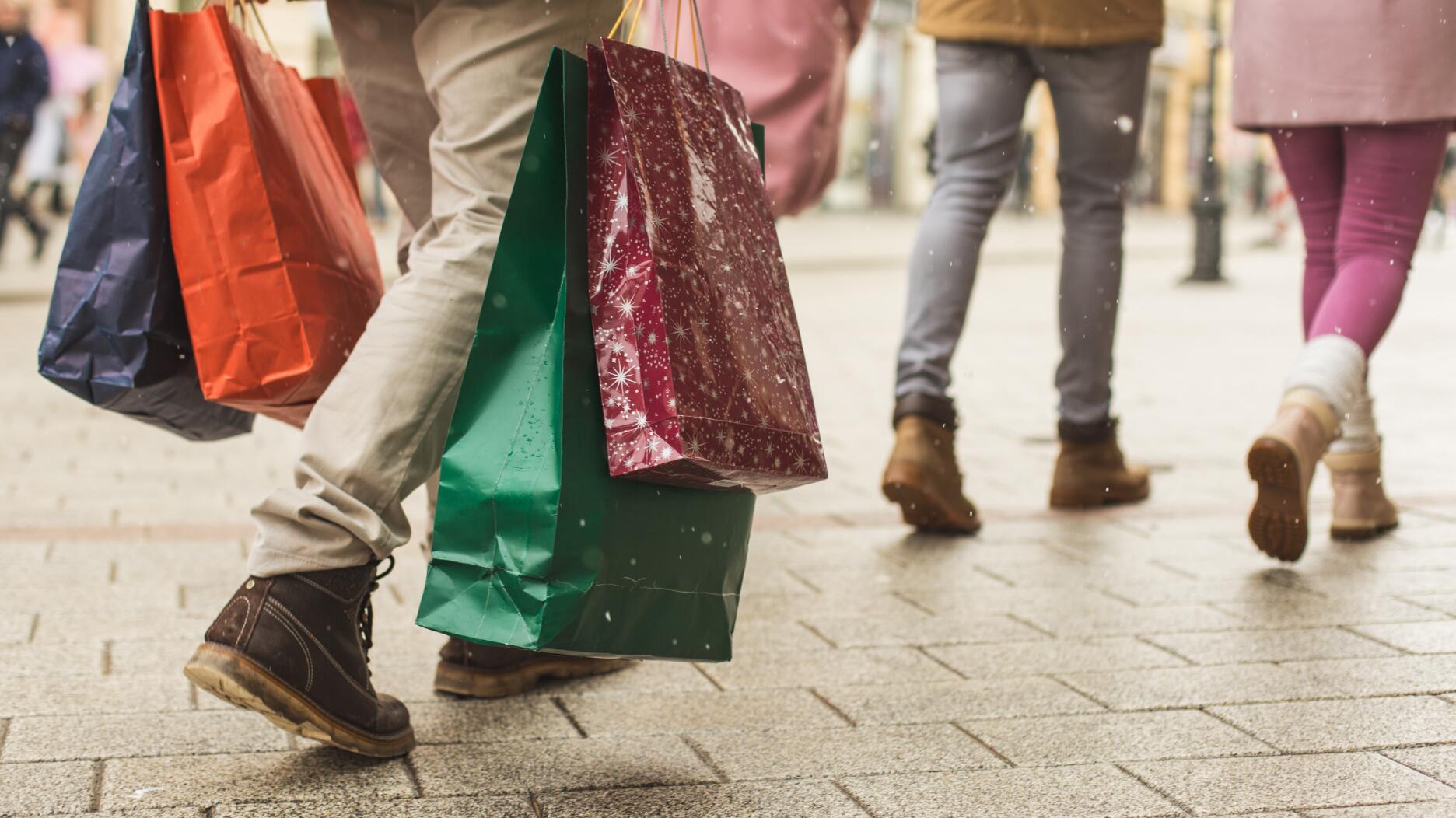Consumer Confidence Improves in May
The index partially rebounded after months of decline, due in part to the U.S.-China deal to temporarily reduce import tariffs.

The Conference Board’s monthly consumer confidence index rose to 98 in May from a downwardly revised 85.7 in April.
Notably, half of the responses were collected after the May 12 announcement that there would be a temporary reduction of some tariffs on imports from China, said the organization.
“The rebound was already visible before the May 12 U.S.-China trade deal but gained momentum afterwards,” said Stephanie Guichard, senior economist, global indicators at The Conference Board.
The Conference Board’s Present Situation Index, which measures consumers’ current view of business and labor market conditions, rose to 135.9 in May from a downwardly revised 131.1 in April.
Consumers’ view of current business conditions improved in May, while their view on the labor market weakened for the fifth consecutive month, said Guichard.
The Expectations Index, which measures consumers’ outlook on income, business, and labor market conditions in the near future, rose to 72.8 from 55.4 in April.
“The monthly improvement was largely driven by consumer expectations as all three components of the Expectations Index—business conditions, employment prospects, and future income—rose from their April lows,” said Guichard.
However, the Expectations Index is still below 80, which usually signals a recession ahead, according to The Conference Board.
The rebound in confidence was seen across all age groups and all income groups.
While the boost was seen across all political affiliations, Republicans saw the strongest improvements.
Notably, on a six-month moving average basis, confidence in all age and income groups was still down due to previous monthly declines.
As for the write-in responses, tariffs remained a hot topic, with consumers expressing concerns about tariffs increasing prices and negatively impacting the economy.
However, some respondents did say they were hopeful that the announced and future trade deals would support economic activity.
Inflation and high prices were still top concerns, but some responses mentioned easing inflation and lower gas prices, said the Conference Board.
Consumers’ outlook on their family’s current and future financial situation, measures not included when calculating the Present Situation and Expectations Index, improved slightly.
Respondents were asked a special question in May’s survey about if they had changed their spending and financial behavior recently.

More than one-third (37 percent) of respondents said they put money aside for future spending.
More than one-quarter (27 percent) said they had to use their savings to pay for goods and services, while 26 percent said they have postponed major purchases.
There was an understandable difference between income groups.
Consumers in households making over $125,000 were more likely to have saved money, while those in lower income households were more likely to have dipped into their savings or postponed a purchase.
Overall, 19 percent of respondents said they made purchases ahead of tariffs, with wealthier respondents more likely to have done so versus those in lower income households.
Consumers were also asked in May how worried they were about being laid off, not being able to afford necessities, and not being able to afford desired goods and services.
Affordability was more of a concern than job security, said the Conference Board.
Nearly half of respondents said they were concerned about being able to afford the things they need and want, while less than one-quarter said they were concerned about losing their jobs.
Looking at other metrics, “Consumers’ Perceived Likelihood of a U.S. Recession over the Next 12 Months” declined in May.
The number of consumers expecting higher interest rates over the next 12 months was little changed, while the average 12-month inflation expectations dipped less than one percent.
Consumers were also more positive about the stock market, with 44 percent expecting to see stock prices rise over the next 12 months, up from 38 percent in April.
Meanwhile, 38 percent expect to see stock prices decline, an improvement from 47 percent in April.
“This was one of the survey questions with the strongest improvement after the May 12 trade deal,” said Guichard.
She also noted that plans to purchase homes and cars and book vacations increased notably, with “significant gains” after May 12.
Plans to buy big-ticket items like appliances and electronics were also on the rise, as were plans to purchase services.
Dining out remained in the No. 1 spot, followed by streaming services. Plans to go to the movies, theater, live entertainment, and sporting events increased the most compared with April.
The Consumer Confidence survey results for June are scheduled to be released on June 24.
The Latest

In its annual report, Pinterest noted an increase in searches for brooches, heirloom jewelry, and ‘80s luxury.

Starting Jan. 1, customers can request the service for opal, peridot, and demantoid garnet.

The 111-year-old retailer celebrated the opening of its new location in Salem, New Hampshire, which is its third store in the state.

How Jewelers of America’s 20 Under 40 are leading to ensure a brighter future for the jewelry industry.

The new catalog features its most popular chains as well as new styles.


The filmmaker’s personal F.P. Journe “FFC” prototype was the star of Phillips’ recent record-setting watch auction in New York.

The new location in the Design District pays homage to Miami’s Art Deco heritage and its connection to the ocean.

Roseco’s 704-page catalog showcases new lab-grown diamonds, findings, tools & more—available in print or interactive digital editions.

“Longtime favorite” presenters, as well as first-time speakers, will lead talks and workshops at the annual event in Tucson next year.

Silas Smith of Meridian Metalworks won the challenge with his pendant that blends Australian and American landscapes.

The sale of the 31.68-carat, sunset-hued stone was part of Sotheby’s first series of events and auctions in Abu Dhabi.

Most customers who walk into your store this month have made up their minds. Your job is to validate their choice, Emmanuel Raheb writes.

The collection features characters and motifs from Ukrainian folklore, including an enchanted mirror and a magic egg.

MatrixGold 3.11, the newest version of the jewelry design program, offers more flexibility, precision, and creative control.

The pavilion will be part of the 2026 JA New York Spring show, scheduled for March 15 to 17.

Kadet, a 1994 National Jeweler Retailer Hall of Fame inductee, helped grow the family-owned retailer in the Chicago area and beyond.

Billed as the world’s smallest wearable, Lumia Health’s new smart earrings have a health tracker subtly embedded in the back.

Don’t let those with December birthdays feel blue. Help them celebrate their month with blue zircon, turquoise, and tanzanite.

The new pink sapphire version of the piece dances with its wearer in the brand’s “Icons After Dark” holiday campaign.

A choice that’s generated a lot of commentary, Pantone says “Cloud Dancer” marks a fresh start and encourages relaxation and creativity.

The manufacturer’s holiday campaign features a gift guide filled with trending designs and jewelry that can be personalized.

The man was charged with theft, accused of ingesting the necklace while in a jewelry store in Auckland, New Zealand.

The Florida independent expanded its store from 8,000 to 14,000 square feet, fulfilling the vision of its late co-founder, Jim Dunn.

Sponsored by De Beers Group

The classic 5600 series G-Shock has been scaled down to about a tenth of its size, becoming a fully functioning watch ring.

The association’s annual conference and gala will take place Feb. 4, 2026, during the Tucson gem shows.

The January show will include a workshop for jewelry retailers on implementing AI to strengthen their businesses.






























